From the perspective of material properties, S355MC belongs to the high-strength microalloyed steel specified in the European standard EN 10149-2, and its chemical composition is carefully designed. The carbon content is controlled at a low level (usually not more than 0.12%), and microalloying elements such as niobium, titanium, and vanadium are added, which significantly improve the strength of the steel through fine-grain strengthening and precipitation strengthening mechanisms. The manganese content is between 0.70-1.50%, which helps to improve hardenability and strength. The content of harmful elements such as sulfur and phosphorus is strictly controlled to ensure good toughness and welding performance of the material. The typical mechanical properties of S355MC are: yield strength ≥355MPa, tensile strength 430-550MPa, and elongation ≥18%. This excellent strength-toughness balance enables it to withstand complex stress states and dynamic loads.
In terms of production technology,
S355MC straight seam welded steel pipe is mainly manufactured by high-frequency electric resistance welding (ERW) process. The process first unwinds and flattens the hot-rolled steel coil, and then gradually bends the strip into a tube through a forming unit. During the forming process, precise control of the forming angle and pressure is the key, which directly affects the weld quality and the geometric dimensional accuracy of the steel pipe. High-frequency current (100-400kHz) is introduced through the contact electrode to produce a skin effect at the edge of the strip, so that the metal is quickly heated to the welding temperature (about 1350-1400℃), and solid-state welding is achieved under the pressure of the extrusion roller. Compared with traditional arc welding, the ERW process has the advantages of fast speed (up to 60m/min), narrow heat-affected zone, and stable welding quality. Online heat treatment, such as normalizing or annealing, is usually required after welding to eliminate welding residual stress and improve organizational uniformity. The finishing process includes sizing, straightening, eddy current/ultrasonic flaw detection, and hydrostatic testing to ensure that the steel pipe meets strict dimensional tolerances and mechanical property requirements.
In terms of application areas, S355MC straight seam welded steel pipes show excellent adaptability. In construction projects, it is widely used in load-bearing components of large-span buildings, such as steel structure workshops and stadiums. Its high strength allows the design of lighter structures and reduces the foundation cost. In the field of engineering machinery, key components such as booms and chassis made of this material can withstand alternating loads and impact loads. The automotive manufacturing industry uses its good cold formability to process chassis parts and safety components. Particularly worth mentioning is its application in the field of new energy - wind power tower manufacturing. S355MC's excellent low-temperature toughness and fatigue performance (impact energy can still reach more than 27J at -40°C) make it an ideal choice for wind power projects in high-cold areas. According to actual cases, wind power towers using S355MC straight seam welded steel pipes can reduce weight by 15-20% compared to traditional structures, greatly reducing transportation and installation costs.
The quality control system is crucial to the production of S355MC straight seam welded steel pipes. Modern production lines are equipped with advanced online testing equipment, such as laser diameter gauges to monitor the outer diameter and ovality of steel pipes in real time, and X-ray industrial televisions to perform 100% inspection of welds to ensure that there are no defects such as incomplete penetration and slag inclusions. In addition to conventional tensile and bending tests, mechanical property tests also require Charpy V-notch impact tests to verify low-temperature toughness. Metallographic inspection focuses on the grain size and second-phase precipitation in the heat-affected zone of welding. Manufacturers usually pass ISO 3834 welding quality system certification and EN 10204 3.1/3.2 material certificates, and some high-end products must also meet more stringent standards such as API 5L or EN 10219. It is worth mentioning that in order to adapt to different corrosive environments, S355MC can also be subjected to surface treatments such as hot-dip galvanizing or epoxy coating to extend its service life to more than 25 years.
From the perspective of market development, the S355MC straight seam welded steel pipe industry is facing important opportunities and challenges. The recovery of infrastructure construction and the transformation of energy structure around the world have driven demand growth. The market size is expected to reach US$8.5 billion in 2025, with a compound annual growth rate of about 4.5%. As the largest producer, China has a complete industrial chain advantage, and some companies have been able to stably produce high-end products with a wall thickness of 25mm. However, it also faces the dual pressures of rising trade protectionism and green production requirements. Future technology development directions include: developing varieties with higher strength (such as S500MC) to meet lightweight needs; optimizing welding processes to reduce energy consumption (currently, the electricity consumption per ton of steel is about 350kWh); exploring hydrogen metallurgical paths to reduce carbon footprint. Intelligent production is also an important trend. Through digital twin technology, process parameters can be optimized in real time to control the product defect rate below 0.3%.
In terms of selection and use, engineering and technical personnel need to consider a number of factors comprehensively. The wall thickness selection should be determined by stress calculation, while considering the corrosion allowance (generally increased by 1-2mm). Welding is recommended as the preferred connection method, and low-hydrogen type welding rods such as E7018 should be selected, and the preheating temperature should be controlled at 100-150℃. The bending radius during cold bending should not be less than 3 times the pipe diameter to avoid the orange peel phenomenon. When storing, avoid contact with materials with high chloride ion content (such as sea sand) to prevent pitting. Regular maintenance recommends a comprehensive inspection every 3 years, focusing on the expansion of microcracks in stress concentration areas such as welds and openings.
In summary, as an important basic material for modern industry, the technical maturity and market acceptance of S355MC straight seam welded steel pipe have reached a high level. In future development, the industry needs to continue to promote product upgrades, process innovation, and service value-added in order to maintain its leading position in the fierce international competition. For end users, reasonable selection, standardized construction, and scientific maintenance are the key to fully exerting the performance of materials, which requires close cooperation between manufacturers, design units, and construction parties. With the continuous emergence of new materials and new processes, S355MC straight seam welded steel pipe will surely show its value in a wider range of fields.
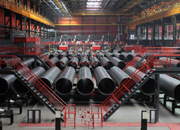 Threeway Steel is known as a professional supplier engaged in manufacturing and distributing a wide range of steel pipe, and our headquarter located the central part of China – Hunan and six associated factories throughout China.
Threeway Steel is known as a professional supplier engaged in manufacturing and distributing a wide range of steel pipe, and our headquarter located the central part of China – Hunan and six associated factories throughout China.
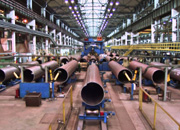 Threeway Steel is known as a professional supplier engaged in designing, manufacturing and distribution of a wide range of steel products with the headquarter located the central part of China – Hunan and six associated factories throughout China.
Threeway Steel is known as a professional supplier engaged in designing, manufacturing and distribution of a wide range of steel products with the headquarter located the central part of China – Hunan and six associated factories throughout China.
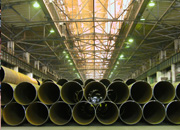 Threeway Steel is known as a professional supplier engaged in designing, manufacturing and distribution of a wide range of steel products with the headquarter located the central part of China – Hunan and six associated factories throughout China.
Threeway Steel is known as a professional supplier engaged in designing, manufacturing and distribution of a wide range of steel products with the headquarter located the central part of China – Hunan and six associated factories throughout China.
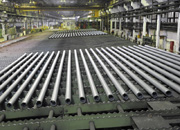 Threeway Steel is known as a professional supplier engaged in designing, manufacturing and distribution of a wide range of steel products with the headquarter located the central part of China – Hunan and six associated factories throughout China.
Threeway Steel is known as a professional supplier engaged in designing, manufacturing and distribution of a wide range of steel products with the headquarter located the central part of China – Hunan and six associated factories throughout China.
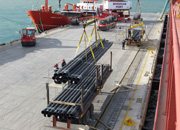 Threeway Steel is known as a professional supplier engaged in designing, manufacturing and distribution of a wide range of steel products with the headquarter located the central part of China – Hunan and six associated factories throughout China.
Threeway Steel is known as a professional supplier engaged in designing, manufacturing and distribution of a wide range of steel products with the headquarter located the central part of China – Hunan and six associated factories throughout China.

